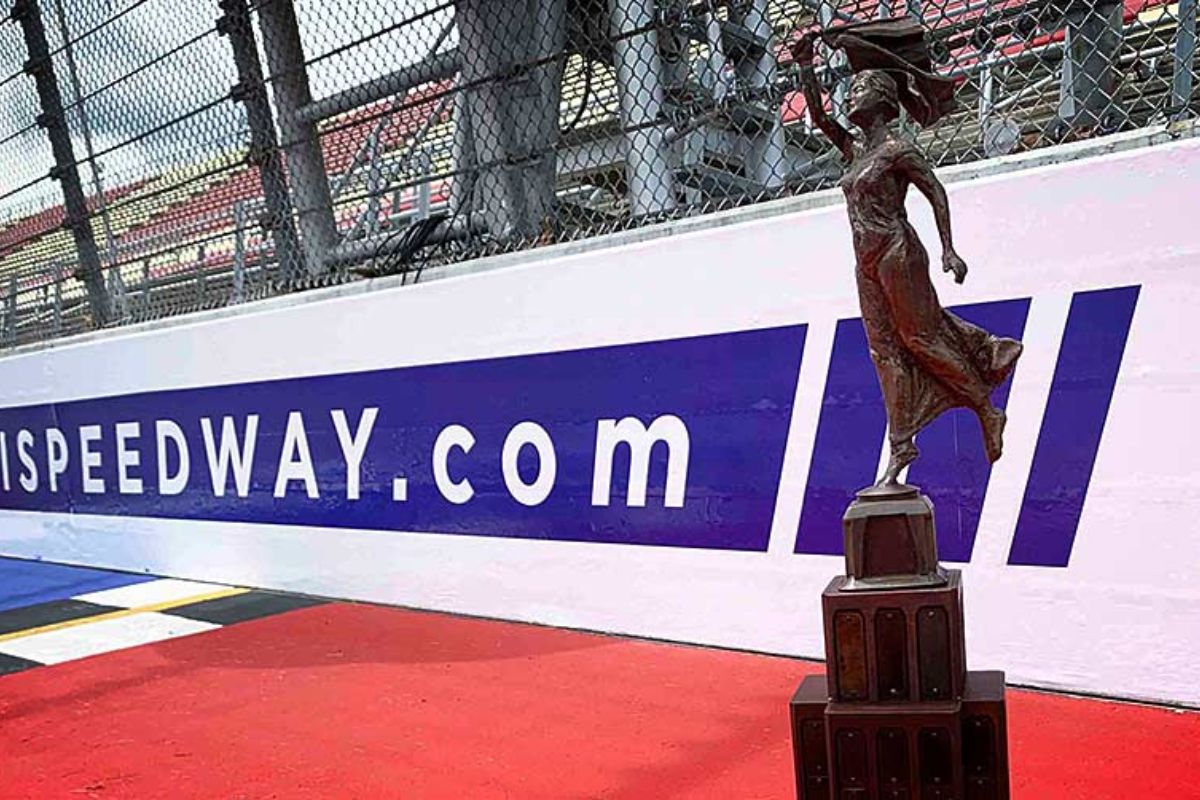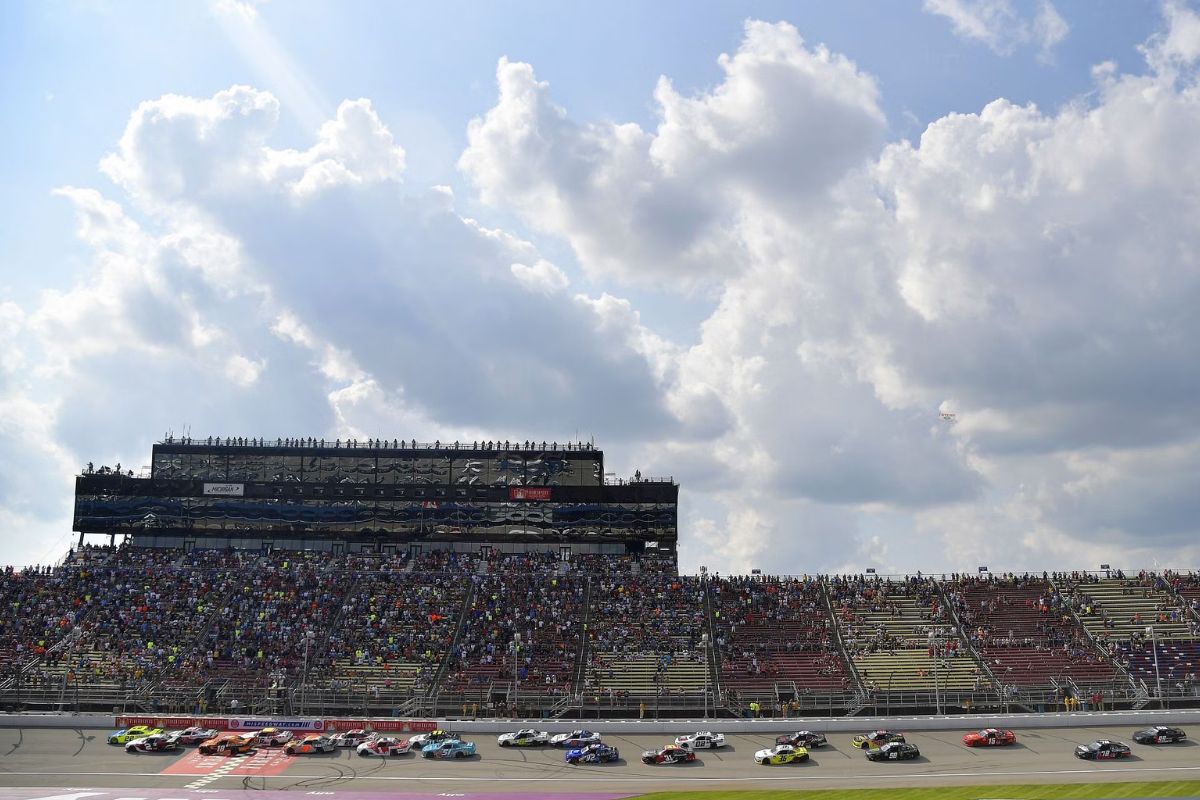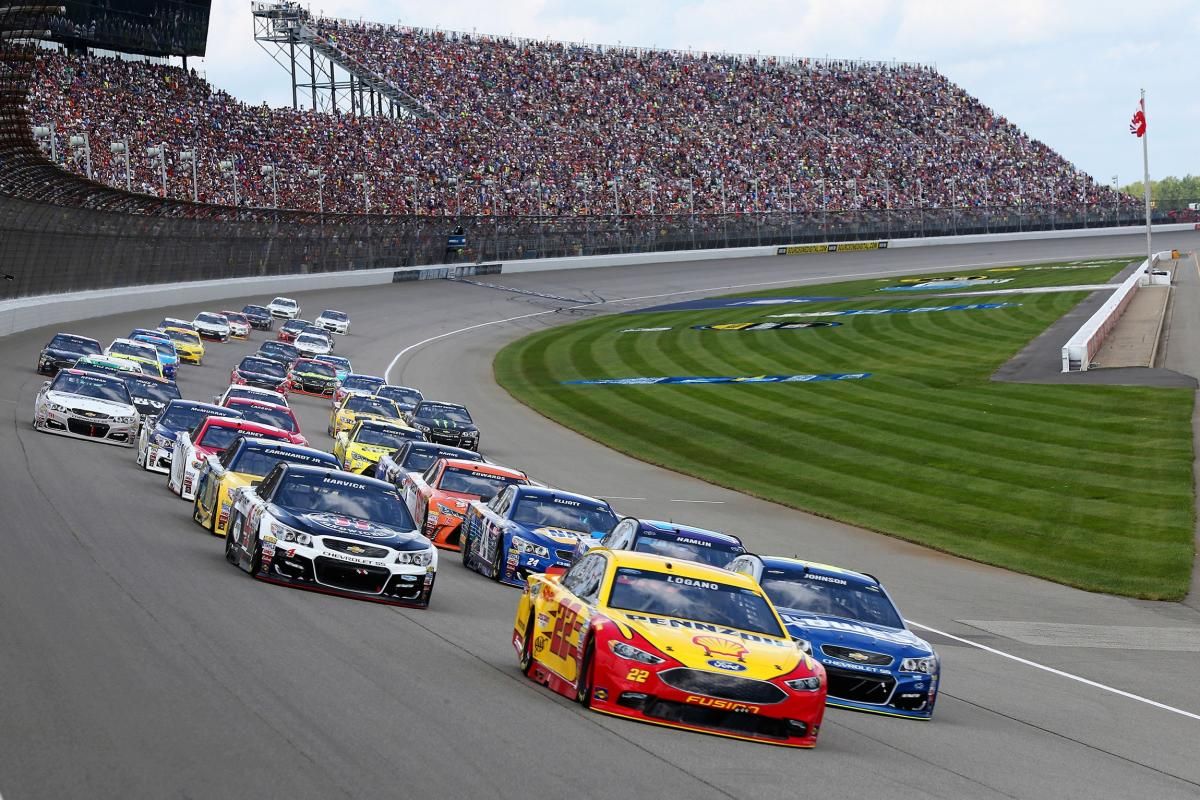NASCAR’s Michigan Heritage Trophy: The NASCAR Michigan Heritage Trophy, awarded at the Michigan International Speedway, is not merely a reflection of race victory but a symbol of engineering expertise and intense rivalry among leading automotive manufacturers such as Chevrolet, Ford, and Toyota. This unique trophy, mirroring the essence of Michigan’s automotive heritage, encapsulates the spirit of innovation that drives the competitive edge in NASCAR. As these manufacturers vie for supremacy on the track, each race not only contributes to the storied history of this prestigious award but also influences the evolving dynamics of automotive technology. The implications of these developments have a far-reaching impact on the sport and the automotive industry at large.
Key Takeaways
- The Heritage Trophy is awarded to the manufacturer whose car first crosses the finish line at Michigan International Speedway.
- Designed by artists Steve Kuypers and Steve McShane, the trophy features a base resembling Detroit’s Fisher Building.
- It symbolizes the collective engineering excellence of manufacturers like Chevrolet, Ford, and Toyota in NASCAR.
- The trophy emphasizes Michigan’s automotive legacy and the state’s pivotal role in the history of NASCAR.
- The competition for the Heritage Trophy fuels a year-long rivalry among manufacturers, enhancing the race spectacle and driving technological advancements.
The Heritage Trophy at Michigan International Speedway
The Heritage Trophy, awarded at Michigan International Speedway, distinctively celebrates not the individual drivers, but the skill and achievement of the car manufacturers whose vehicles cross the finish line ahead. This unique approach highlights a deep recognition of the collaborative efforts and technological expertise that define the top-performing teams in NASCAR’s Cup Series. Unlike other trophies that commemorate the singular efforts of drivers, the Heritage Trophy shifts the spotlight to the collective engineering and strategic brilliance that propel these vehicles to victory.
Situated in the heart of the American automotive industry, Michigan International Speedway serves as a fitting venue for such an accolade. By focusing on manufacturers, the trophy not only honors current engineering feats but also ignites a competitive spirit among the leading auto giants. This is particularly significant in an era where advancements in automotive technology are crucial. The race, in turn, transcends the mere spectacle of speed to become a celebration of automotive innovation and heritage.

The Design and Significance of the Heritage Trophy
Reflecting on the competitive spirit and technological skill celebrated by the Heritage Trophy, its thoughtful design and symbolic elements deserve closer examination. Introduced in 2013, the trophy stands three feet tall and weighs 30 pounds, embodying a grand presence symbolic of monumental achievement. Crafted by artists Steve Kuypers and Steve McShane of Fortress Studios, the design intricately melds tradition with modernity.
The base of the trophy, evocative of Detroit’s iconic Fisher Building, connects the award to Michigan’s rich architectural heritage. This choice is not merely aesthetic but serves to root the trophy deeply in the local culture, bridging the gap between the past and the present. This foundation supports a figure of profound historical significance—the Greek goddess Nike. Known universally as the goddess of victory, her inclusion atop the trophy is symbolic of the ultimate success that every NASCAR competitor aims for.
Former Track President’s Vision for the Trophy
Roger Curtis, the former track president, envisioned the Heritage Trophy as a symbol deeply rooted in Michigan’s automotive legacy, emphasizing the historical and futuristic perspectives of the automobile industry. Curtis’s vision was not merely about commemorating past achievements but also about igniting a dialogue on the evolution of automotive technology and its implications for the future. His approach was to create a bridge between the rich heritage of the automobile industry in Michigan and its potential trajectory towards innovation and modernity.
“We really wanted ties to Detroit and the state. To me, it was still very logical to have this celebration, rivalry of the competition of the manufacturers here in Michigan, but part of that tie is we wanted to include what the future of the automobile might be.”-Roger Curtis
Curtis believed that the Heritage Trophy could serve as a confluence point for celebrating the ongoing rivalry and collaboration among leading automobile manufacturers based in Michigan. He saw this competition as an integral element of the state’s economic and cultural identity, which deserved recognition and celebration in the context of NASCAR, a sport deeply intertwined with automotive advancements.
The trophy, according to Curtis, was meant to do more than just acknowledge the winner of a race; it was designed to highlight the integral relationship between the racing industry and automotive manufacturing. By doing so, it aimed to foster a greater appreciation of how competition among manufacturers drives technological advancements that resonate beyond the racetrack, influencing consumer vehicles and broader technological trends.

Importance of Michigan in NASCAR History
Michigan’s significant role in NASCAR’s history began in 1951 when Bill France introduced stock car racing to the automotive heartland at the Michigan Fairgrounds. This crucial event marked the inception of a symbiotic relationship between NASCAR and the state renowned as the cradle of the American automotive industry. Detroit, often hailed as the global epicenter of car manufacturing, provided an ideal backdrop for NASCAR, intertwining the sport’s growth with the evolution of automotive technologies.
The convergence of NASCAR and Michigan’s automotive expertise was not merely geographical but deeply industrial. The presence of major automobile manufacturers in Detroit spurred innovations in automotive engineering, many of which were tested and refined through the rigorous demands of stock car racing. This collaboration fostered a technological synergy, wherein advancements driven by the high-performance requirements of NASCAR racing influenced broader automotive design and manufacturing.
Moreover, Michigan’s support of NASCAR helped cultivate a fervent fan base, drawn from the ranks of autoworkers and engineers who not only understood but revered the mechanical artistry of stock cars.
NASCAR at Michigan International Speedway and the Heritage Trophy Tradition
Building on its storied association with the automotive industry, NASCAR’s introduction of the Heritage Trophy at Michigan International Speedway symbolizes the ongoing competition among leading manufacturers to dominate the sport. Michigan International Speedway, a cornerstone venue in NASCAR since its opening in 1969, serves as a battleground where the strength of automotive giants like Chevrolet, Toyota, and Ford is put to the ultimate test. The Heritage Trophy, symbolic of this fierce contest, is not merely a trophy but a symbol of supremacy and engineering excellence in the world of stock car racing.
The significance of the Heritage Trophy extends beyond the physical award. Instituted to highlight the importance of manufacturers in NASCAR, it fuels a year-long rivalry that is as much about national pride as it is about technological innovation and team strategy. Each race not only contributes points to the drivers’ standings but also impacts the manufacturers’ standings, making every event at the Michigan track a critical encounter in the quest for the Heritage Trophy.

News in Brief: NASCAR’s Michigan Heritage Trophy
The NASCAR Michigan Heritage Trophy not only embodies the fierce competition among leading automotive manufacturers but also stands as proof of the rich automotive heritage of Michigan. Its design and significance highlight the critical role of innovation and collaboration in advancing automotive technology within the NASCAR domain. This trophy, thus, serves not simply as a symbol of victory but as a guiding light of engineering excellence and historical importance in the automotive and racing industries.
Our Reader’s Queries
Q. How many NASCAR races are there in Michigan?
A. Historically, the track hosted two Cup Series races, one in June, typically around Father’s Day weekend, and another in August. However, in 1973, the August race was omitted as track owner Roger Penske substituted it with a Champ Car event. In response to the COVID-19 pandemic in 2020, both races were condensed into a single weekend held in August.
ALSO READ: Chase Elliott Playoff Prospects Dimmed: Unfortunate Turn at Michigan Speedway


